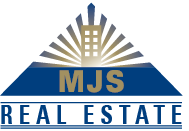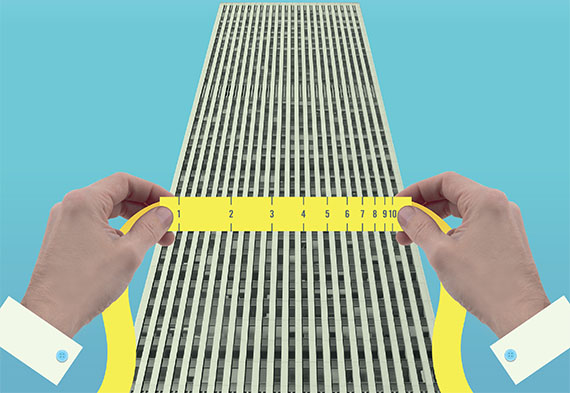Underestimation of the leasable area of a building
In my blog published last Friday, I explained how landlords / managers (Lessors) of non-residential buildings have reasons to overestimate the measurements of leased premises and to underestimate the total leasable area of the building (TLAB) in which the leased premises are located. Today, we will see together some of the schemes used by the Lessors to delude tenants over TLAB. These stratagems are identified in bold type below.
Tenants always shocked
When carrying out lease audit mandates, I too often unearth Lessors who deliberately underestimate their TLAB. Tenants are always shocked to learn that their Lessor can do this. This is a much more widespread reality than one might think.
How do we find out?
First of all, it should be known that TLAB values can be obtained from several sources such as specialized magazines, consulting firms that specialize in the collection of this kind of information, real estate brokers and on the website of the Lessors. And yes, very often, the TLAB published on the website of a Lessor is superior to the TLAB it uses for the calculation of the proportionate share of the additional rent of the tenant!!! The experience and some other procedures are also part of the lease auditor’s arsenal to identify the possibility that the actual TLAB might be greater than the one used by the Lessor. These data from different sources should alert tenants that the amount of additional rent charged by the Lessor is most likely overestimated. I say “most likely” because it will take further audit procedures (that you will find in my next blog) to validate.
1st scheme
It is very common for Lessors to deliberately fail to determine or clearly define TLAB in their standard lease and if they do, it is often inferior to reality. The tenant often only gets to know this area when he receives for the first time the annual adjustment of the additional rent of his Lessor, commonly known as the “13th invoice”. Moreover, this area may change on the “13th invoices” of subsequent years, which is rather surprising because the TLAB should not change unless there are major changes to the building.
2nd scheme
It happens that a tenant or I will ask the Lessor to provide the certificate of total measurement of the building to prove the TLAB. The problem is that in most cases that I have experienced in this practice, the Lessor adopts the bad habit of not providing the document on the pretext that it is lost or does not exist!!! Know that this is for all practical purposes impossible and here’s why:
- Even before acquiring a building, during the execution of its due diligence, the Lessor will make sure to obtain a certificate of complete measurement of the building to know the TLAB as this one, combined with other relevant information, will have an impact on the amount that he will be willing to pay for the acquisition of the building.
- The vast majority of leases in effect today, require the measurement of rental space according to the BOMA 1996 standard or a more recent version of that standard. Even if your lease provides for a different or older method, it is likely that for other tenants of the building, BOMA 1996 will apply. To measure the leasable area of a tenant according to these recent standards, the Landlord has no choice but to have all the spaces in his building measured.
- Your Lessor operates in the field of real estate and TLAB is a capital and of utmost importance to him. Otherwise, it would be as if a car manufacturer sells a vehicle without knowing if its cost price is higher or lower than the suggested retail price!!!
- The price of certain operating contracts that the Lessor grants to suppliers depends on the TLAB.
- TLAB is necessary for the “rental” function, to determine the area of the rental spaces and for management of the rental income of the building.
- A competent Lessor, seeks by all means to make profitable the operation of his building. He must know where each square foot is to maximize his income.
There are of course other reasons to explain the need for a Lessor to know about TLAB. It is therefore a datum too vital for a Lessor to do without. If your Lessor tries to make you believe that he does not have this information, do not believe him.
3rd scheme
Another trick Lessors like to use to avoid producing a certificate of measurement is to scare the tenant by making him believe that if he has to measure the building, the new TLAB may be smaller than that which the Lessor is already using, which would be unfavorable to the tenant. Again let’s not be fooled. As we have seen above, the Lessor certainly already has the information in hand and believe me, if it was favorable to him, the Lessor would have already adjusted the calculations accordingly.
4th scheme
Not to mention situations where Lessors hid under a so-called confidentiality of information argument for not producing a certificate. This kind of argument is simply an insult to our intelligence since the information is available from several sources that the Lessor has often himself disseminated in the market. In any case, this type of information has very little reason to be considered confidential. Generally, a Lessor likes to strut about the size of his real estate portfolio, regardless of its actual size.
Something to hide?
If your landlord refuses or procrastinates to give you a certificate of measurement of the building, he surely has something to hide from you. After all, if he has nothing to hide he has no reason to refuse the request.
Next Blog
In my next blog, which will be released on Thursday, March 29th, we will discuss the leasable area of tenants’ leasable space and how tenants can protect themselves from being cheated by their Lessor with respect to various measures of a building.
You suspect your TLAB to be understated?
If this is the case, do not hesitate to make a comment in the designated section at the bottom of this page.



